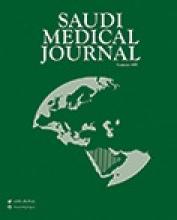Review Article
Social media use for public health promotion in the Gulf Cooperation Council. An overview
In AlSadrah review, Social media platforms (SMPs) have emerged as powerful tools for public health promotion. As the 6 countries of the Gulf Cooperation Council (GCC) have the highest internet and social media usage rates in the world, and according to the initiatives for the introduction of a new health system and strategies based on non-traditional methods according to the Saudi Vision 2030, this review aimed to investigate different SMPs use and impact on public health promotion in the GCC countries. Accumulating evidence indicated that diabetes knowledge, women’s health, breast-feeding practices, oral health, appropriate antibiotic use, physical activity, road safety awareness, quitting smoking, and breast cancer awareness, were the most common specified topics. Future research should focus on populations that are medically underserved and who have no or limited access to health-care facilities. Also, future research, in particular, the intervention type, is required to cover more countries in the GCC.
see page 9
ORIGINAL ARTICLES
Association of CYP2C19, TNF-α, NOD1, NOD2, and PPARγ polymorphisms with peptic ulcer disease enhanced by Helicobacter pylori infection
AL-Eitan et al assess the correlation between number of genetic variations of CYP2C19, TNF-α, NOD1, NOD2, and PPARγ genes with the severity of Helicobacter pylori (H. pylori) infections and peptic ulcers (PU). Formalin-fixed paraffin-embedded (FFPE) tissue was used to extract genomic DNA. Genotyping of the studied single nucleotide polymorphisms (SNPs) were applied using the sequencing protocol. A total of 251 patients (mean age: 42.12 ± 16.09 years) and healthy controls (mean age: 52.76 ± 19.45 years) were enrolled in this study. No significant association between patients and the studied polymorphisms except for rs2075820 of the NOD1 (p=0.0046) were observed. The alleles frequency association was insignificant in all studied SNPs with a p-value more than 0.05. They conclude that the genetic association of many genetic variants with the risk of H. pylori infection and the response to the treatments in the Jordanian Arab population. TLR-10 rs10004195 SNP was associated with decreasing the risk of H. pylori infections; others, such as NOD1 rs2075820 SNP, TLR-4 rs10759932 SNP, and TNF-α rs361525 and rs1799964 SNPs showed a significant association with the responsiveness to the type of treatment prescribed to the patients by the consultant.
see page 21
Impact of COVID-19 lockdown on glycemic control in children and adolescents
Al Agha et al identify how children and adolescents with type 1 diabetes were coping with their condition during the COVID-19 lockdown, by detecting differences in blood glucose control and in lifestyle, including diet, physical activity, and mood deterioration, before and during the lockdown. This descriptive, cross-sectional study was conducted at King Abdulaziz University Hospital (KAUH), Jeddah, Saudi Arabia. Data were collected from interviews, using various forms of telecommunication. The total sample size was 150 patients. The mean age of the patients was 12.45 years. The lockdown was associated with a significant increase in patients’ weight (p=0.001), body mass index (p=0.001), and blood glucose readings (p=0.007) compared to their values before the lockdown. Authors conclude that there is a negative impact of the COVID-19 lockdown was found on blood glucose values and BMI, which may correlate with a lack of physical activity, increased consumption of carbohydrates and fast food, and mood deterioration.
Comparison between the number of insulin taking before and during the lockdown
see page 44
CASE REPORT
Proteus syndrome caused by novel somatic AKT1 duplication
AlAnzi et al present a baby girl born at 35 weeks of pregnancy by cesarian section. Antenatally, there was an abnormal mass on the left side of the neck occupying the entire neck area and extending to the ear and shoulder. The parents are first cousins with no similar history in the extended family. The planed EXIT procedure (ex utero intrapartum treatment) was conducted successfully. The baby was intubated with a size-3 tube, and a large neck mass was noted on the left side. There was an abnormal dark pigmentation over the mass and patches over the ipsilateral bodyside, with relatively larger digits of the same side.
Upon examination, the growth parameters were within normal limits: weight, 3 kg (25-50th percentile); head circumference, 34 cm (25-50th percentile); and length, 50 cm (50th percentile); vitally stable; head of normal size, with anterior fontanel and palpable suture lines; normal eye exam; no nystagmus; no cleft lip or palate.
Magnetic resonance imaging of the head and neck showing the large multilocular cystic hygroma
see page 95
- Copyright: © Saudi Medical Journal
This is an open-access article distributed under the terms of the Creative Commons Attribution-Noncommercial-Share Alike 3.0 Unported, which permits unrestricted use, distribution, and reproduction in any medium, provided the original work is properly cited.








